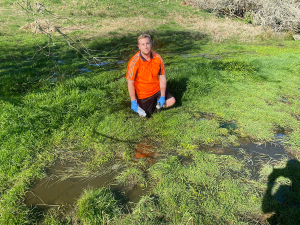“Two high-level strategic thoughts occupy our minds: where will our growth come from and how can we develop our advantage so we can make a margin and be profitable?” he told the Go Global export conference in Auckland.
Jager outlined three main areas of growth: developing markets such as ASEAN, China, Middle East, Brazil, Mexico – and it takes time and resource.
Another avenue of growth is new products. Releasing Zespri Gold in the last few years generated “fantastic” returns.
“Just as importantly it develops something exciting in the market – it gives us something to sell to our retail partners,” he says. “Finally, we are marketing health – people are concerned and do want quality food. It’s a really crowded space, and so deep questions are asked about how you differentiate yourself.”
Jager said Zespri is owned by 2700 kiwifruit growers with 13,000ha and about 400,000 tonnes of kiwifruit per annum exported globally. They also sourced fruit from Japan, Korea, Italy and France. To illustrate the degree of competition, Jager showed a photo of a few of New Zealand’s “brown and hairy kiwifruit” lost in an array of competing and colourful fruit in a display.
“So how are you going to develop margin? There’s one way I am pretty sure you’re not – that is by going into the commodity business.”
He says New Zealand is too small and too far from markets to make a margin in the commodity space. “Really successful commodity businesses are based on low-cost production, proximity to markets, low-cost access to capital. That’s not us,
so we’ve got to differentiate.”
Zespri has about one third of the global kiwifruit trade and about three-quarters of the margin. “That’s the differentiate story, that’s the premium story.”
He says to be in the high margin differentiated space you have to invest disproportionately in R&D, design, marketing and after-sales service. “So where do you compete, where to you cooperate? I heard John Banks say the other morning Zespri is a monopoly, I thought that was very rude.”
New Zealand kiwifruit growers do work together in some functions of the supply chain, he said. They work together in distribution management, branding, marketing, innovation and export operations.
“The total amount of capital the New Zealand kiwifruit growers have invested in that part of the business model is $70m. Zespri doesn’t grow kiwifruit, we don’t pack kiwifruit, we certainly don’t distribute kiwifruit in the markets; if you look at the capital invested in those parts of the supply chain – that’s about $3.5b.”
Jager says there’s a genuine question for New Zealand export business about where you work collaboratively to build scale and where you compete. He said it’s an important question when thinking about the incentive design of your business. He said people rarely talk about incentive design but it’s important in building a differentiated supply chains.
“We have people growing kiwifruit and post-harvest partners worth about $600m and we’ve got big distribution partners offshore – much bigger than Zespri. And we’ve got massive retail partners offshore.”

















